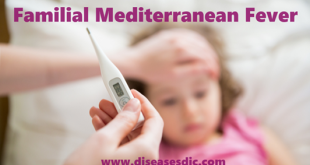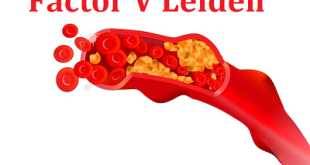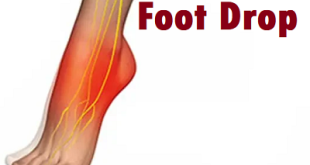Definition of Frostbite
Frostbite is a type of injury that can occur when your skin’s exposure to the cold. It is also refered as the freezing of body tissue (usually skin) that results when the blood vessels contract, reducing blood flow and oxygen to the affected body parts. The normal sensation is lost, and color changes also occur in these tissues. Frostbite is most likely to affect body parts that are farther away from the body core and, therefore, have less blood flow. These include your feet, toes, hands, fingers, nose, and ears.
The degrees of Frostbite
There are three degrees of cold injury: frostnip, superficial frostbite, and deep frostbite.
- Frostnip is a mild form of frostbite. Continued exposure leads to numbness in the affected area. As your skin warms, you may feel pain and tingling. Frostnip doesn’t permanently damage the skin.
- Superficial frostbite. Superficial frostbite appears as reddened skin that turns white or pale. Your skin may begin to feel warm – a sign of serious skin involvement. If you treat frostbite with rewarming at this stage, the surface of your skin may appear mottled. And you may notice stinging, burning and swelling. A fluid-filled blister may appear 12 to 36 hours after rewarming the skin.
- Deep (severe) frostbite. As frostbite progresses, it affects all layers of the skin, including the tissues that lie below. Your skin turns white or bluish gray and you may experience numbness, losing all sensation of cold, pain or discomfort in the affected area. Joints or muscles may no longer work. Large blisters form 24 to 48 hours after rewarming. Afterward, the area turns black and hard as the tissue dies.
Pathophysiology of Frostbite
Your body works to stay alive first and to stay functioning second.
In conditions of prolonged cold exposure, the body sends signals to the blood vessels in the arms and legs telling them to constrict (narrow). By slowing blood flow to the skin, the body is able to send more blood to the vital organs, supplying them with critical nutrients, while also preventing a further decrease in internal body temperature by exposing less blood to the outside cold.
As this process continues and the extremities (the parts farthest from the heart) become colder and colder, a condition called the hunter’s response is initiated. The body’s blood vessels are dilated (widened) for a period and then constricted again. Periods of dilatation are cycled with times of constriction in order to preserve as much function in the extremities as possible. However, when the brain senses that the person is in danger of hypothermia (when the body temperature drops significantly below 98.6 F [37°C]), it permanently constricts these blood vessels in order to prevent them from returning cold blood to the internal organs. When this happens, frostbite has begun.
Frostbite causes
This condition is happening when the skin and underlying tissues freeze. The exposure to cold – weather conditions is the most common cause for the frostbite. But also frostbites can be also caused by direct contact with freezing metals, ice or very cold liquids. There are some specific conditions which can lead to frostbite such as
- Touching materials such as frozen metal, cold packs or ice
- When you staying out in the cold and wind too long. The risk is increasing as the air temperature falls below 5 F (minus 15 C) even if there is low wind speed. Also in the wind chill of minus 16.6 F (minus 27 C), the frostbite can happen on exposed skin in less than 30 minutes.
- Wearing clothing that is not suitable for the conditions you are in, for example, it does not protect against wet, windy or cold weather or it is too tight
Risk factors of Frostbite
People who spend a lot of time outside in cold weather are at risk of frostbite and other cold-weather injuries. Young children, older people, and those who are homeless are particularly susceptible.
Factors that increase the chance of frostbite include:
- Medical conditions, such as exhaustion, dehydration, circulatory problems, diabetes, hunger, and malnutrition
- Mental illness, panic, or fear, as these may affect decision-making in freezing temperatures
- Cigarettes, alcohol, or drug abuse
- Some medications, such as beta blockers, due to their effects on blood circulation
- Previous injuries from frostbite
- Age, because infants and older people experience more difficulty in retaining body heat
- Wearing constrictive clothing or footwear
- Exposure to wet and windy weather
- High altitude, because of low temperatures and low oxygen levels
People who have a condition that affects blood vessels and circulation should take extra measures to protect themselves against frostbite.
What are the early signs and symptoms of frostbite?
The signs and symptoms of frostbite depend on the extent and depth of tissue injury. People with superficial frostbite may experience the following signs and symptoms in the affected area.
- Pain
- Burning
- Tingling
- Numbness
- Pale colored skin
- Clear-colored skin blisters may develop
- Firm-feeling skin with soft underlying tissue which can move over bony ridges
As the degree of injury progresses it goes deeper into the skin layers and the body temperature is between 95F and 35C through the rectum. Frostbite signs and symptoms of deep frostbite can develop, which may include
- Complete loss of sensation,
- Pale, yellowish, bluish, gray, or mottled skin color,
- Formation of blood-filled skin blisters, and
- Firm-feeling skin and underlying tissue, with the affected area feeling hard and solid.
With advanced frostbite injuries, the affected area can subsequently appear blackened and gangrene can develop, placing the affected individual at high-risk for infection.
Complications
The complications that follow frostbite are:
- Persistent numbness of the affected areas
- Hyperhidrosis (excessive sweating)
- Increases the chances of future frostbites
- Increased cold sensitivity
- A permanent change in skin color
- Loss of nail
- Frostbite arthritis (joints become stiff)
- If the frostbite damages the bone’s growth plate in children, growth defects occur
- Infection
- Tetanus
- The death of tissues can cause gangrene
- Hypothermia
How Is Frostbite Diagnosed?
The doctor will make history in order to gather information on the events of the exposure and the medical condition prior to the cold injury.
- The doctor will take note of the vital signs, including temperature, pulse, blood pressure, and respiratory rate in order to exclude or treat any immediate life threats such as hypothermia or severe infection.
- X-rays or other imaging studies may be performed, but they probably will be deferred until weeks later when they are more useful to the treatment team.
- The doctor will collect data in order to classify the injury as superficial or deep and the prognosis as favorable or poor.
A good prognosis is heralded by intact sensation, normal skin color, blisters with clear fluid, the ability to deform the skin with pressure, and the skin becoming pink when thawed.
Blisters with dark fluid, skin turning dark blue when thawed, and an inability to indent the skin with pressure indicate a poor prognosis.
Treatment for Frostbite
Rapid rewarming in a warm (98.60°F to 102.2°F [37°C to 39°C]) water bath is the treatment of choice. Slow rewarming may cause more tissue damage.
If you are stranded with frostbite and unable to get medical help:
- Try to get to a warm location. Wrap yourself in blankets.
- Do not put snow or hot water on the injured area.
- Do not rub affected areas.
- Tuck your hands into your armpits to try to rewarm them.
- If it’s available, use warm water (at about 100°F [38°C]) to rewarm your frostbitten area.
- Avoid refreezing the affected area. This can result in more severe injury.
- Walking on frozen feet and toes can cause damage. It may be more important to find shelter.
- Drink warm liquids.
- Avoid alcohol and sedatives.
- Cover the injured area with a clean cloth until you can get medical help.
- Rewarming can be intensely painful. To relieve pain, take over-the-counter pain medication such as acetaminophen or ibuprofen.
Medications
Medications used to depend on the severity of frostbite. Examples include:
- Antibiotics to treat any bacterial infections
- Nonsteroidal anti-inflammatory drugs (NSAIDs) to reduce inflammation
- Prescription pain medication
- Drugs to prevent blood clots in the first 24 hours
- Vasodilators after 24 hours if needed due to lack of improvement
Other treatments
Other frostbite treatments may include:
- Opening and emptying blisters
- Aloe Vera gel or other ointments to relieve inflammation and promote healing
- Elevation of the injured body part above your heart
- A tetanus booster shot
- Hyperbaric oxygen therapy – a special chamber that uses oxygen under greater pressure than normal to help with blood flow and tissue repair
- Surgery – in severe cases, amputation of all or part of the affected body part may be necessary
How to prevent frostbite?
Be sure to follow the tips below to prevent frostbite:
- Be aware of the weather forecast. Avoid spending extended periods of time in cold weather as well as coming into direct contact with metal surfaces or water while out in the cold.
- Dress appropriately for cold weather. Wear things like mittens or gloves, hats that cover your ears, scarves, sunglasses, or ski masks. Outer garments should be waterproof and windproof.
- Change out of wet clothes as soon as you can.
- Stay hydrated and eat nutritious meals. Avoid alcohol, as it can make you lose body heat more quickly.
- Be able to recognize the signs of frostbite. Remember that frostnip is a precursor to more serious frostbite. If you or someone else appears to be developing frostbite, seek warmth and medical attention as soon as possible.
 Diseases Treatments Dictionary This is complete solution to read all diseases treatments Which covers Prevention, Causes, Symptoms, Medical Terms, Drugs, Prescription, Natural Remedies with cures and Treatments. Most of the common diseases were listed in names, split with categories.
Diseases Treatments Dictionary This is complete solution to read all diseases treatments Which covers Prevention, Causes, Symptoms, Medical Terms, Drugs, Prescription, Natural Remedies with cures and Treatments. Most of the common diseases were listed in names, split with categories.








I am presently supring from this typetype of sickness the write-ups is indeed helpful.
Very educative.
How can I get it saved to be read offline.
We will work for it to give your best experience to read in offline mode.